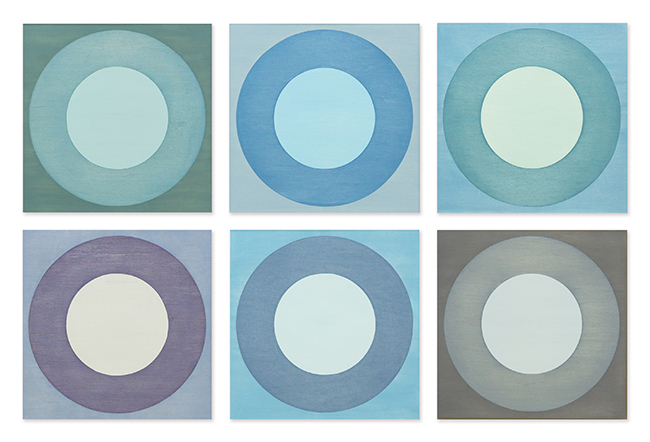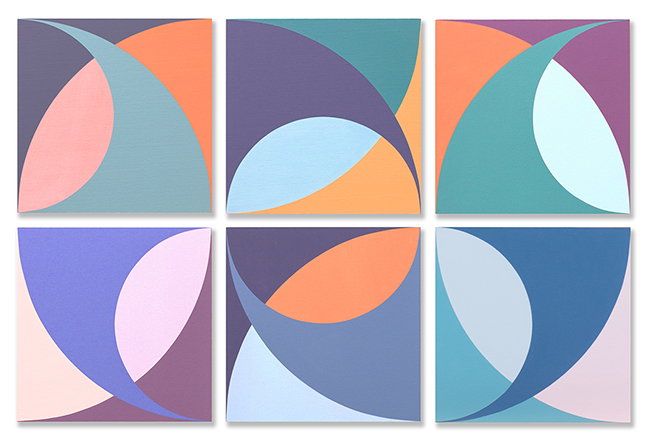Haeley Kyong is an artist whose work reaches beyond conventional boundaries, resonating deeply with those who experience it. Her creations revolve around the belief that art has the power to transform and evoke raw emotions, often sparking moments of deep reflection through a minimalist yet impactful style.
Raised in South Korea, Kyong’s artistic journey has been influenced by a mix of cultural backgrounds and a strong academic foundation. She developed her craft at the Mason Gross School of the Arts at Rutgers University and later at Columbia University in New York. This blend of Eastern and Western educational experiences is evident in her ability to fuse traditional methods with contemporary ideas, creating work that remains timeless yet progressive.

In One World, Many Visions, Kyong explores how people see the world differently while remaining interconnected. The piece highlights the richness and diversity of human perspectives, showcasing how varied thoughts and experiences shape our shared reality. Despite these differences, she weaves them together into a cohesive whole, emphasizing the shared existence that links us all.
Bold colors dominate this artwork, allowing individual perspectives to shine while maintaining a unified composition. Through minimalism, Kyong eliminates distractions, creating space for viewers to engage with the piece in their own way. By using color as a form of communication, she fosters emotional connections, inviting viewers to reflect on their place within the world.

This work is a study in diversity and perception. Through abstraction, Kyong encourages viewers to set aside preconceptions and explore the complexity of collective experience. It’s both a commentary on society and an introspective journey into the human mind.
In Around the World to the Six Continents, Kyong reflects on the balance between individuality and global interconnectedness. This piece reveals a fundamental reality: each person is distinct, yet we all contribute to a larger whole. The artwork is built around a circle, symbolizing the Earth.
Using arcs and geometric forms, Kyong crafts a visual representation of the six continents. The simplicity of the design conveys harmony and interdependence, while the interaction of shapes speaks to how individuals, despite differences, come together to form communities.

The strength of this piece lies in its ability to balance individuality with unity. Kyong skillfully navigates the tension between personal identity and collective experience, using circular forms to represent human relationships. The artwork carries a message of cooperation and interconnectedness, reminding us that although we may come from different parts of the world, we share a common existence.
In A Circular Story Teller, Kyong delves into questions of identity, inheritance, and the unseen connections that bind people together. Drawing inspiration from DNA, Kyong translates this biological concept into a visual narrative, using a single piece of paper folded in traditional techniques to represent the complexity of genetic patterns.
The folded paper becomes a storyteller, unveiling the layers of connections that make us who we are. Kyong once again incorporates circular motifs, symbolizing the cyclical nature of life and the transmission of traits across generations. These circular forms reflect the concept of inheritance, both in a literal sense through biology and in a cultural context through traditions passed down.
What stands out in A Circular Story Teller is Kyong’s ability to take a scientific idea and transform it into a visually accessible form. The minimalist design invites thoughtful contemplation, while the repetition of shapes symbolizes the act of passing on both genetic and cultural traits. Her exploration of identity extends beyond the physical, probing the invisible forces that shape us.
Kyong uses this piece to ask bigger questions about who we are, what we inherit, and the choices we make. It encourages viewers to reflect on their own journeys, navigating the balance between what has been passed down and what they create for themselves.
Through these three pieces, Haeley Kyong demonstrates her ability to merge simplicity with profound meaning. Her minimalist approach draws viewers in, inviting personal reflection, while her focus on identity, diversity, and human connection speaks to universal themes that resonate deeply across cultures and experiences.

